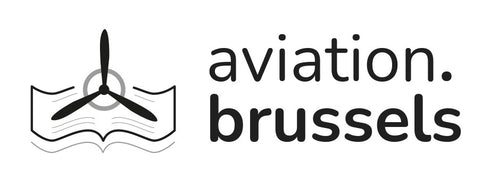THE COMPLETE REFERENCE WORK OF 20TH CENTURY AIR COMBAT – THE AEROSPACE ENCYCLOPEDIA OF AIR WARFARE – VOLUME ONE 1911 – 1945













Prix régulier 69,00 € TTC 6%
Characteristics
| Book cover finish | Hardcover ( square back binding ) |
| Special features | Dust jacket |
| Condition | Used very good |
| Number of pages | 256 |
| Published date | First published 1997 |
| Language | English |
| Size | 30.48 x 22.86 cm |
| Author | Francis K. Mason, Peter R. March, Daniel J. March, John Heathcott, Jim Winchester, Jon Lake, Brian S. Strickland |
| Editor | Aerospace Publishing Ltd |
Description
- builds chapter-by-chapter, campaign-by-campaign, to provide a complete history of aerial warfare 1911-1945
- comprehensive text describes each campaign
- beautiful paintings capture events in the history of air warfare
- first-hand accounts from the personnel who fought
- highly detailed colour three-view drawings of the main aircraft types
- hundreds of contemporary photographs, many in colour, showing all the major combatant aircraft in each campaign
Aerial warfare began even before World War I, although in the early days it consisted of little more than spotting and occasionally dropping bombs.
But, as Europe plunged into the terrors of the Great War, aircraft assumed ever- greater importance, leading to raging fights between agile scouts such as the SE.5, Albatros D.V, Camel, Fokker D.VII and SPAD. It was not long before German Gotha and British Handley-Page bombers ushered in a new era of strategic air power, bombing troops and military targets.
In the years following World War I, warplanes progressed slowly but continued to be a devastating weapon in the colonial wars of Africa and the Middle East. As the 1930s advanced towards the cataclysm of World War II, new conflicts gave the world a taste of what was to come: Bf 109s and Polikarpov I-16s battled over Spain during the Civil War, and the Japanese war machine tested its new hardware in Manchuria.
Then Germany, and later Japan, unleashed their new terrifying brands of air warfare on a wider world. Led by Bf 109 fighters with Dornier and Heinkel bombers, Germany's rapid gains in Europe were blunted by Royal Air Force Spitfires and Hurricanes, while in Russia the massed ranks of Shturmoviks and Yak fighters turned around a desperate situation against Hitler's Luftwaffe.
As the tide turned, USAAF day-bombing Fortresses and Lancaster night-bombers pounded Germany, ripping the heart out of the Reich. Then the Typhoons, Thunderbolts and Mustangs supported the final march on Berlin itself.
In the Pacific it was the might of the US Navy, with its Hellcats and Dauntlesses, which wrested control of the region from Japan. After years of Allied onslaught, intense B-29 bombing campaigns brought the Japanese Empire to its knees.
All of these conflicts, large and small, are presented in the AEROSPACE ENCYCLOPEDIA OF AIR WARFARE VOLUME ONE.
From wire-braced biplanes to the first jet fighters, from the Somme to the atom bomb, this volume provides a unique history of the aircraft at war, from its earliest days to the final act of World War II.













